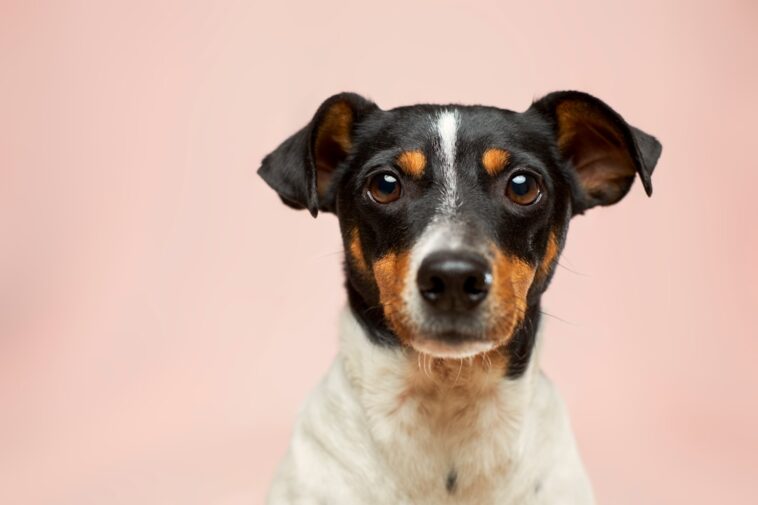Hey there, art lovers! Ever wanted to capture the adorable charm of a dog on paper? As a long-time artist and dog enthusiast, I’m here to guide you through the process of drawing your own furry friend, step by step. Whether you’re a beginner or have some drawing experience, these tips will help you create a drawing you’ll be proud of.
Gather Your Supplies
Before we start, let’s get our tools ready. You’ll need:
- Paper (sketchbook or drawing paper works best)
- Pencils (an HB pencil for sketching and a 2B or 4B for darker lines)
- Eraser (a kneaded eraser is great for lifting graphite without damaging the paper)
- Sharpener
- Optional: Colored pencils, markers, or paint for adding color
Start with Basic Shapes
The key to drawing anything, including dogs, is to break it down into simple shapes. Think circles, ovals, and rectangles. This will help you get the proportions right before adding details.
Step 1: The Body. Begin by drawing a large oval for the dog’s torso. This will be the foundation of your drawing. Don’t press too hard with your pencil, as these are just guidelines.
Step 2: The Head. Add a circle or oval for the head, overlapping the body slightly. The size and shape of the head will depend on the breed of dog you’re drawing. For example, a bulldog will have a wider head than a greyhound.
Step 3: The Snout. Draw a smaller oval or rectangle extending from the head to create the snout. Again, the shape and length will vary depending on the breed. Think about whether you’re drawing a short-nosed pug or a long-nosed collie.
Step 4: The Legs. Add four rectangles for the legs. Pay attention to the length and angle of each leg. The front legs usually come straight down from the body, while the back legs are angled back. Think about the pose you want your dog to be in – standing, sitting, or running.
Step 5: The Tail. Add a simple line or curved shape for the tail. The tail’s shape and position add to the dog’s personality. A wagging tail shows happiness, while a tucked tail might indicate fear.
Refine the Sketch
Now that you have the basic shapes in place, it’s time to refine the sketch and add more detail.
Step 1: Connect the Shapes. Use curved lines to connect the shapes, creating a smoother outline of the dog’s body. Pay attention to the contours and curves of the dog’s form.
Step 2: Add Facial Features. Draw the eyes, nose, and mouth. The placement of these features is crucial for capturing the dog’s expression. The eyes are usually almond-shaped, and the nose can be a simple oval or triangle. Don’t forget to add a little shine to the eyes to make them look more lifelike.
Step 3: Draw the Ears. Add the ears, paying attention to their shape and size. Some dogs have floppy ears, while others have pointy ears. Consider the breed you are drawing and the characteristic ear shape.
Step 4: Refine the Legs and Paws. Shape the legs and paws, adding details like toes and claws. Remember that dogs walk on their toes, so the paws should be slightly elevated.
Step 5: Erase Guidelines. Once you’re happy with the overall shape and details, gently erase the initial guidelines you drew in the first step.
Add Details and Shading
To bring your drawing to life, add details and shading. This will give your dog dimension and make it look more realistic.
Step 1: Add Fur. Use short, light strokes to add fur texture to the dog’s body. Vary the length and direction of the strokes to create a more natural look. Pay attention to the way the fur flows and clumps together.
Step 2: Shading. Use your pencil to add shading to the drawing. Areas that are further away from the light source should be darker, while areas that are closer should be lighter. Use your finger or a blending stump to smooth out the shading.
Step 3: Add Highlights. Use an eraser to lift some of the graphite and create highlights. This will add contrast and make the drawing pop.
Step 4: Add Details. Add any final details, such as whiskers, spots, or patterns in the fur.
Tips for Drawing Different Dog Breeds
Each dog breed has unique characteristics, so it’s important to pay attention to these when drawing. Here are a few tips for drawing some popular breeds:
Labrador Retriever: Labradors have a sturdy build, a broad head, and floppy ears. Pay attention to the shape of their head and their muscular legs.
German Shepherd: German Shepherds have a noble appearance, with pointy ears and a long snout. Pay attention to their posture and their distinctive black mask.
Pug: Pugs have a distinctive wrinkled face, a short snout, and bulging eyes. Pay attention to the folds of skin on their face and their curled tail.
Chihuahua: Chihuahuas are small and dainty, with large ears and big eyes. Pay attention to their delicate features and their small size.
Adding Color
Once you are happy with your pencil drawing, you can add color using colored pencils, markers, or paint. Experiment with different techniques and find what works best for you. Start with light layers of color and gradually build up the intensity. Remember to consider the dog’s natural coat color and markings.
Common Mistakes to Avoid
Here are some common mistakes people make when drawing dogs, and how to avoid them:
- Disproportionate shapes: Double-check your proportions before adding details. Use your pencil to measure the different parts of the dog’s body and make sure they are in the right proportion.
- Flat drawing: Add shading and highlights to create depth and dimension.
- Lack of detail: Don’t be afraid to add small details like fur texture and eye highlights.
- Rushing the process: Take your time and enjoy the process. Drawing takes practice and patience.
Practice Makes Perfect
The more you practice, the better you’ll become at drawing dogs. Don’t be discouraged if your first attempts aren’t perfect. Keep practicing and experimenting with different techniques. Look at photos of dogs and try to capture their unique features and expressions. Most importantly, have fun!
Frequently Asked Questions
What’s the best way to draw realistic fur?
To draw realistic fur, use short, overlapping strokes that follow the direction of the fur growth. Vary the pressure of your pencil to create different tones and textures. You can also use a blending stump to soften the fur and create a more realistic look.
How can I capture the personality of the dog in my drawing?
Pay attention to the dog’s eyes, mouth, and posture. These features can convey a lot of emotion. Look at photos of the dog and try to capture its unique expressions. You can also add details that reflect the dog’s personality, such as a favorite toy or a distinctive marking.
What if I’m not good at drawing?
Everyone starts somewhere! Drawing is a skill that can be learned and improved with practice. Don’t be afraid to experiment and make mistakes. The most important thing is to have fun and enjoy the process.
So, grab your pencils and paper and start drawing! With a little practice and patience, you’ll be able to create beautiful drawings of your favorite furry friends. Happy drawing!



GIPHY App Key not set. Please check settings